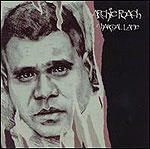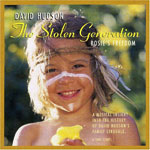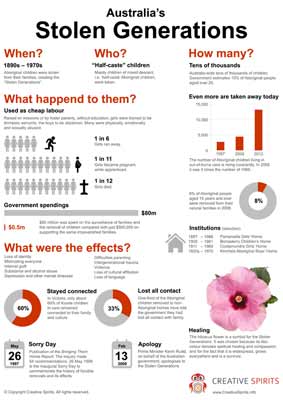Stolen Generations
The Stolen Generations in the arts
Many members of the Stolen Generations sought healing in the arts, for example through painting and music.

Wishing you knew more about Aboriginal culture? Search no more.
Get key foundational knowledge about Aboriginal culture in a fun and engaging way.
This is no ordinary resource: It includes a fictional story, quizzes, crosswords and even a treasure hunt.
Stop feeling bad about not knowing. Make it fun to know better.
Songs about the Stolen Generations
Archie Roach, an Aboriginal singer-song writer, wrote "Took The Children Away", a song featured on his 1990 debut album "Charcoal Lane":

... Took us away They took us away Snapped from their mother's breast Said this is for the best Took us away. Told us what to do and say Taught us all the white man's ways Then they split us up again And gave us gifts to ease the pain Sent us off to foster homes As we grew up we felt alone Cause we were acting white Yet feeling black ...
Listen to this powerful rendition of Archie's song, performed during the 2016 Schools Spectacular, and sung by a young Koori man, Sebastian Kelly-Toiava, who at the time was a 16-year-old student from Macquarie Fields in western Sydney.

World-famous didgeridoo master David Hudson also made an album about his true family history called "The Stolen Generation - Rosie's Freedom".
Explore more Aboriginal music.
Brown Skin Baby - an anthem for the Stolen Generations
Bob Randall is an Yankunytjatjara Elder and a traditional owner of Uluru (Ayers Rock). In the early 1970s Bob's song, Brown Skin Baby (They Took Me Away) became an anthem for members of the Stolen Generations. Read a transcript of the song.
Paintings as a way to heal the wounds

The healing process involved for Aboriginal and Torres Strait Islander people stolen from their families is an emotional and long one.
Many Aboriginal people find a healing channel through painting. One of them is Aunty Rhonda Collard from Ipswitch, near Brisbane, who has channelled her experiences and pain into art [1].
Aunty Rhonda was a fourth-generation inhabitant of Western Australia's notorious Moore River Settlement (which featured in the movie Rabbit-Proof Fence). Her mother, grandmother and great-grandmother had all to go through the traumatic experience of being stolen.
Her painting Black Madonna features a weeping black woman surrounded by the words of the white man. "Black Madonna is about the forced-feeding of a new religion to a people and a culture that's been here for 40,000 years or more," explains Aunty Rhonda [1].
"It's about hearing someone else's stories, singing someone else's songs, eating someone else's food. Even through all of this, we are still here."
For the first time in my sister's life she wept in front of the TV while she was watching [prime minister] Kevin [Rudd] say sorry. All these years she and I had held the pain.
— Aunty Rhonda Collard, Aboriginal artist [1]
Stolen Generations memorial
A memorial to the Stolen Generations in the Mt Annan Botanic Garden near Campbelltown opened in October 2007.
The memorial is thought to put visitors on a journey of healing and reflection. One hectare of forest offers a series of boardwalks which lead to a meeting place, and a sculpture by Aboriginal artist Badger Bates.
The sculpture highlights the tragic consequences of the separation of Aboriginal children from their parents.